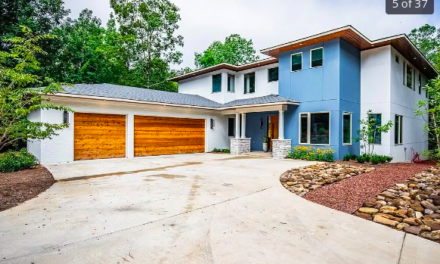By Angela Cutrer
Remember the first time you saw the house you ended up buying? Was the lawn maintained and mowed? Or was the grass overgrown and weedy?
Was the paint pristine or chipped? Were there bright, clean spaces near the door or spider webs barring entrance?
The answers you give might tell a lot about what you paid for that house and how things went afterward.
Did it make a difference on how you approached buying that home? We’re thinking “yes, it did.” With the former, you felt you saw the house, itself, as well-maintained and loved, which equaled in the mind a home needing little work which the family can just move right into.
Or, on the other hand, you thought that long grass and cobwebs everywhere meant this home needs some care for comfort, which equals potential problems that could end up being expensive. And relaxation? That won’t happen any time soon. However, it might mean the sellers would have to take a lower price than they were asking.
Whether selling your home or looking to buy, it’s always a good idea to take care of things before they become a problem. Buyers have a lot – a LOT – of competition in today’s real estate market, but sellers are facing the same.
Realtors in the Oxford area say that inventory is severely limited, so buyers are having to act fast. But act too fast, and you might end up with a money pit that doesn’t make that house feel like home.
Realtors regularly advise both sellers and buyers to make sure to be on their Ps and Qs, which means have an idea of what you want and another of what you are willing to do afterward. The mantra is still “location, location, location,” but so is attractiveness, cleanliness and affordability. Many buyers these days want to be in the right neighborhood, but they also want a house they can be proud of.
Here are five things to keep in mind when owning – or attempting to own – a home.
No. 1: “A potential buyer doesn’t want to see roaches or termite damage,” said Jordan Carter of Pest Marshal. As someone who has been in the business for seven years, Carter had several suggestions for both buyers and sellers. “Termite control is always a good idea whether you are buying or selling,” he added. “We use a layered effect with treating all the way to the wall board and dusting on a long pole for spiders, piping around pipes to cut off any potential pathways for insects to enter a home. You always need to work to limit ways for them to get inside.”
He also suggested keeping trees trimmed, as bugs use the branches as a gateway into a home. Also, “treat crawl spaces to make sure there are no moisture problems,” he said. “Vapor barrier benefits include allowing the air to breathe in that space and keeping out moisture, which bugs and other pests love.”
No. 2: Potential buyers should have a home inspection to protect their investment. A poor inspection doesn’t mean losing the house; it could just mean that there are issues that can easily be enacted to satisfy the bank – and a buyer’s conscience.
No. 3: Remember that maintenance is cheaper than replacement. Whether it’s a yearly inspection to ensure the HVAC is working properly or one that ensures pipes are secured against inclement weather, maintenance is worth every penny.
No. 4: Trying to keep up with the Joneses will get you nowhere. Plan purposefully, with an open mind. Adding a new wood-burning fireplace sounds lovely, but you must consider how much it will actually cost, including labor and materials. Plus, consider asking your home insurance representative how that kind of addition will affect your bottom line.
No. 5: Be honest and sincere with yourself. If you’ve done all you can to make your house shine for potential buyers, discuss with your Realtor any updates or changes that might help. Then relax for a while and let the right buyer find you. Realtors want you to get top dollar and will be more than happy to help make that happen. As for buyers, whatever is not there will already cost you money. Remember to consider researching, for example, how much a fence or pool will cost to install and all the ramifications that might come about because of their existence. Professionals in real estate, banking and insurance can be your best friends for advice.
It’s also important to keep outside looking good; after all, it’s the first thing your potential buyers will see. With the last few winters being so tough, many homeowners are finding their plants and trees looking a bit tired.
Andy McCowen of The Barn Trading Company in Oxford said they’ve been very busy this spring with customers who want replacements of plants, bushes and trees. “A lot of them don’t want to wait to see if their plants will come back,” he said. “They consider them an eyesore and want new ones. Some are wanting something totally different, as well. We’ve been selling a lot of azaleas, gardenias and holly ligustrum, to name a few.”
McCown suggested homeowners scrap a plant’s trunk to see if any green becomes visible; if so, there is a good chance the plant will make a return. This doesn’t include trees, though, he warned.
“Otherwise, people will just have to be patient to see if their plants and trees rebound,” he added.”










